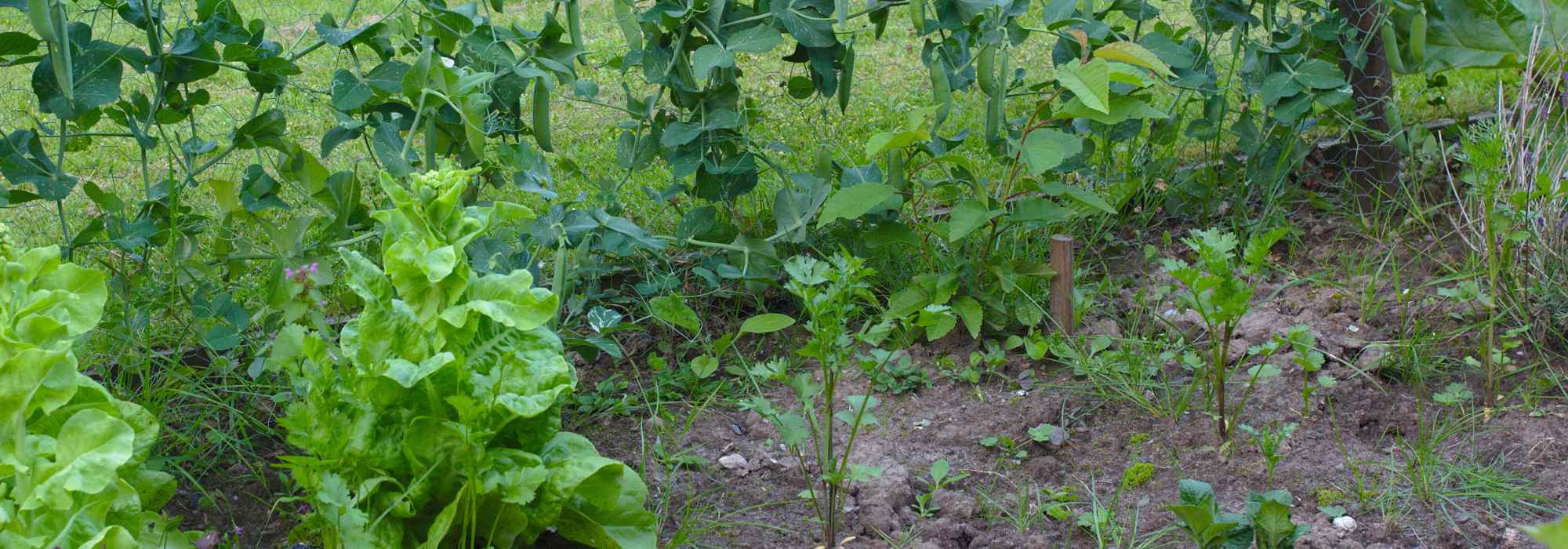
How to achieve abundant harvests in the vegetable garden on a wet soil?
Secrets to a successful vegetable garden on wet soil
Contents
Humid soil presents unique challenges and opportunities for gardening. Its tendency to retain water can be problematic, creating an environment favourable to fungal diseases and potentially suffocating for plants that do not tolerate constant rooting in a humid medium. In addition, this type of soil tends to warm up more slowly in spring, thus delaying start of growth season.
However, with the right techniques and a judicious selection of plants, it is entirely possible to grow a flourishing vegetable garden on wet soil. In this guide, we will explore practical tips and advice to turn humid soil into an asset for your garden, enabling you to succeed with your vegetable garden despite initial challenges.
How can you tell if your soil is a wet soil?
If the question doesn’t really arise on the banks of a lake, pond or stream, it can sometimes be harder to tell. You’ll need to use observation skills or carry out a few simple tests.
Observe topography
Topography can help retain rainwater. Indeed, if the ground is sloping, water will tend to run down it, but if the ground is a hollow, lies at the foot of a slope or at the bottom of a valley, water will tend to collect there.
For a relatively flat garden, there may be a water table or underground springs just below. This can sometimes be seen after heavy rainfall or several consecutive days of rain: plains become covered with water and impermeable subsoils are flooded. To confirm or rule out this possibility entirely, the services of a dowser will be necessary. You can also find clues in place names. For example: Lille (a town once surrounded by marsh forming an island), Allennes-les-Marais, Les Hautes-Rivières, Beaulieu-les-fontaines, etc.
Recognise plants that grow on this type of soil
Besides topography, you can also observe the vegetation that develops there naturally to infer the nature of the soil. Indeed, a concentration of hygrophilous plants — that is, plants that live in continuously wet, sometimes even flooded, soil — will be a good indicator. Among these you will find: marsh thistle, watercress, cuckooflower, marsh bedstraw, purple loosestrife, varieties of rush (scattered, clustered), yellow flag iris, creeping buttercup and lesser spearwort, gypsywort, common loosestrife, hairy willowherb and small-flowered willowherb, but also Aulne glutinous and common sallow.
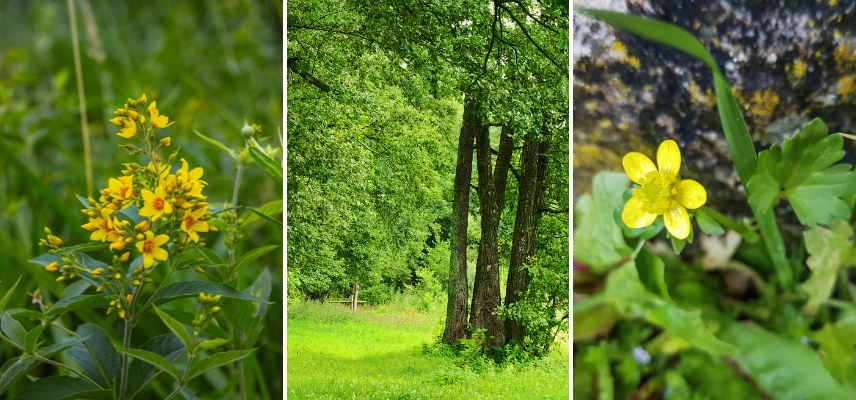
Common loosestrife, Aulne glutinous and creeping buttercup
Particularities of clay soils
There are different types of soil; some are particularly well-draining (high sand content) while others retain water. This is the case with clay soils, which swell when water is present and shrink when it is absent. The phenomenon is such that during drought the ground forms small cracks, while in winter the soil is muddy and the earth is very sticky.
A quick method lets you find out the composition of your soil: the jar test. For this you will need a one-litre jar filled two-thirds with water. Then take a sample of the soil you want to analyse and fill the jar with it. Shake vigorously and leave to settle for a few hours. Sand, being the heaviest, will settle first at the bottom, followed by silt and finally clay. Thus, the greater the proportion of sand, the sandier the soil; the more clay present, the more clayey the soil, etc.
Again, observing the vegetation can indicate clay soil: easily identifiable plants such as dandelion, field thistle and plantain proliferate there.
Finally, another simple method to check for clay soil is the ring test. It involves wetting a handful of soil, rolling it between your hands and forming a ring. If this poses no difficulty, there is no doubt: it’s clay soil.
Dig a hole
Is the weather forecast wet? Perfect — it’s ideal for a final quick test! For this you will need a spade and should dig a hole deep and wide enough (at least 50 cm). After a heavy shower, observe how long water takes to drain; the longer it takes, the less draining the soil is. Here are some benchmarks: less than an hour means soil is too free-draining, beyond four days it’s the opposite; the ideal is therefore between the two, i.e. one to two days.
Read also
12 perennials for heavy, wet soilHow could this be a problem for the vegetable patch?
These soils are mostly either clayey (they retain nutrients) or humus-bearing (made largely of humus). This is good for installing a vegetable patch, as these are rich, fertile grounds, but excess water also brings its share of drawbacks.
Cryptogamous diseases
Cryptogamous (or fungal) diseases are caused by fungi or other parasitic organisms. Most fungi need moisture to develop. This is true for those we eat (porcini, truffles, chanterelles, etc.), mycorrhizal fungi (they live in soil in sym symbiosis with plants) but also for cryptogams.
Nearly 90% of diseases affecting plants are caused by these fungi. Infection occurs in three stages: spores are deposited in vegetable patch by wind or rain; fungus develops and reaches plant (symptoms not yet visible); finally, first signs of disease appear.
Unfortunately infected parts must be cut away to stop spread and possibly save plant. Do not compost infected plants: spores resist heat and using compost will reintroduce fungus into soil. Act quickly at first symptoms, as this means fungus is preparing its spores and risk of contaminating rest of garden is very high.
Among best-known cryptogamous diseases are late blight, grey mould, rust and damping-off. They often cause rotting of roots or whole plant, cause growth delays, stunt fruits and vegetables or prevent fruiting. Limiting constant moisture and rotating crops helps prevent these diseases.
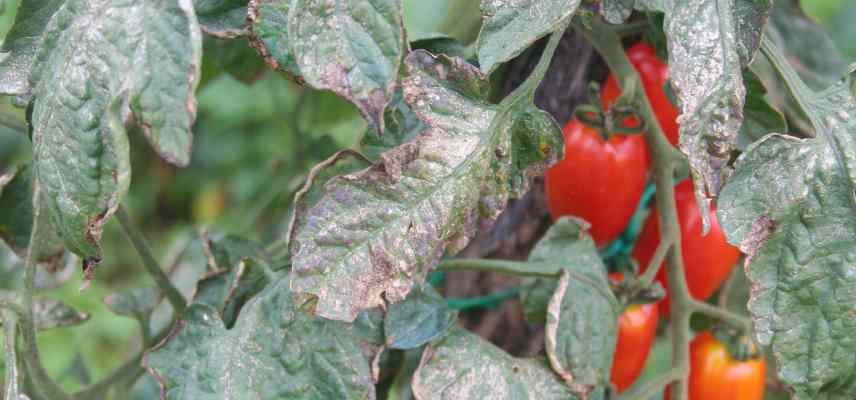
Diseases such as late blight thrive in wet climate and soil
Cold soil
Spring may seem best time to start vegetable patch, but be careful, even if nature is waking, do not rush. March often brings abundant precipitation (those notorious showers) and late frosts still occur in May (famous Ice Saints). Note that soil does not freeze, but the water in it does; wet ground is therefore prone to frost. At start of spring days are still short and sunlight is not enough to warm wet soils.
Many varieties of vegetables, especially fruit vegetables (tomatoes, courgettes, gherkins, peppers, aubergines, etc.) need warmth to develop. Risk with cold soil is that germination does not occur, occurs too slowly or is delayed. Young plants will be poor quality, harvest uncertain or nil. To reduce this, it is common to prepare sowing in greenhouse, in hotbed, and transplant more robust young plants at right time.
Tip : You can tell if soil is warm enough from two signs when superficially scratching surface: soil does not stick to tool and seeds of adventive weeds have started to germinate.
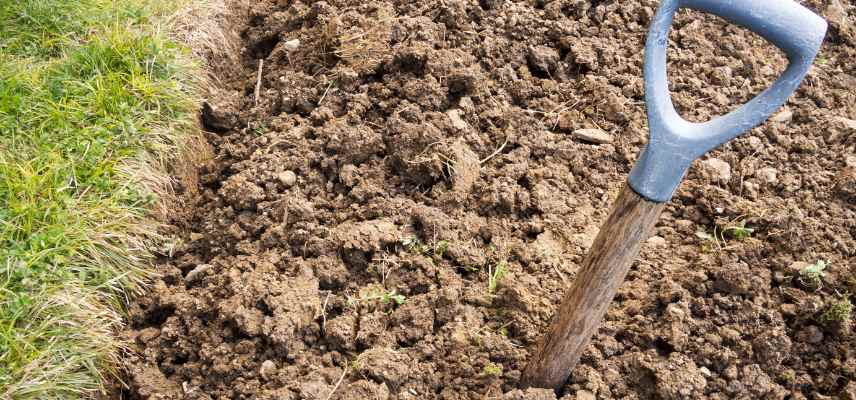
Spring is here, yes, but must wait a little longer in wet soil for it to warm up
Asphyxiating soil
Roots of plants draw water from soil, but not only that. Indeed they also capture nutrients and minerals essential for growth. They also “breathe” thanks to air present in porosities of soil.
Consequently, compact or waterlogged soil is asphyxiating, because poorly aerated. Plant will then be weakened by lack of oxygen, prone to diseases and pests, photosynthesis will not function properly, roots will not explore deeply and of course harvest will be small and poor quality.
When asphyxia is total this is called anoxia and when partial this is called hypoxia. Symptoms are: browning and rotting of roots and/or lower stem, yellowing and necrosis of leaflets or lower leaves of plant, slowed growth.
Roots need oxygen level of 10%. Soil can be aerated in several ways :
- Turn it over using a spade or rototiller, this will loosen compacted soil and create small cavities;
- Encourage development of micro-organisms present in soil; they will create numerous channels, which will improve ground drainage.
What are the solutions?
Fortunately, having a wet soil is not inevitable. There are methods, more or less simple and more or less suited to garden nature, to work around or solve this problem.
Installing a drainage network
Most durable method of all but also heaviest to implement is creating a drainage network. For this, dig a trench along slope in middle of future vegetable garden, same width as furrows seen above, but deeper: allow at least 70 cm. Then create perpendicular trenches about every 4 metres, slightly inclined towards central trench. Next step is to lay a thick felt then a special drainage sheath in each trench. Felt will prevent sheaths from clogging. Then backfill trenches with a layer of gravel at least 20 cm deep, then soil. However, this method is not suited to clay soils.
Digging furrows
To dry out an overly wet ground, digging furrows at various strategic points in garden proves an effective and relatively simple method to set up. Indeed, arm yourself with a spade and dig furrows in direction of slope (if ground is not flat). They should be about 30–40 cm deep and 20 cm wide. Once furrows are dug, fill them with river sand and job is done. Sand will allow water to drain more easily. Beware, this method is useless in clay soil, because clay will naturally retain water.
Creating a living soil
Another idea is to amend soil to make it living, that is to encourage life of micro-organisms present there. Among them are bacteria, earthworms, insects and even fungi. Their role is to break down organic matter, thus creating nutrients essential for plant growth. Fundamental rule to bring life into vegetable garden is to always keep soil covered, either with mulching or by sowing a green manure (plant chosen for its soil benefits, not harvested). You can also leave roots in soil at harvest; they will be broken down by micro-organisms and tunnels they leave will ease water flow. This method takes longer than first one, as nature needs time to do its work. It pairs very well with previous method.
Soilless cultivation
Rather than solving water problem, setting up a raised vegetable garden will allow bypassing issue. This frees you from soil constraints by creating soil ideal for needs. Many options then: raised beds, high planters to ease gardening or permaculture mound. Before starting and choosing, define needs, because you must choose material to add to raise garden: a mix of topsoil, humus, compost (and even dead wood for a mound) in different proportions depending on crop desired. Big advantage of this method is knowing exact soil composition and being ready to host vegetable garden. Minimum elevation of 40 cm is recommended to avoid roots reaching original soil too quickly; this proximity allows nutrient exchanges between two layers and plants will have water reserve within root reach if necessary.
Growing vegetables suited to conditions
Quickest and simplest method is to plant only vegetables adapted to soil. Thus, in clay soil favour growing artichokes, aubergines, chard (silverbeet), chicories, cabbages, spinach, beans, peas, rhubarb, tomatoes. Root vegetables dislike asphyxiating soils but can still adapt to clay soils. Finally, soil nature also influences flavour.
Whereas in humus-bearing soil, turn to growing aubergines, gherkins, courgettes and more widely squashes, melons, chillies and peppers. If this solution is easiest, idea of growing only crops suited to conditions is not very satisfying.
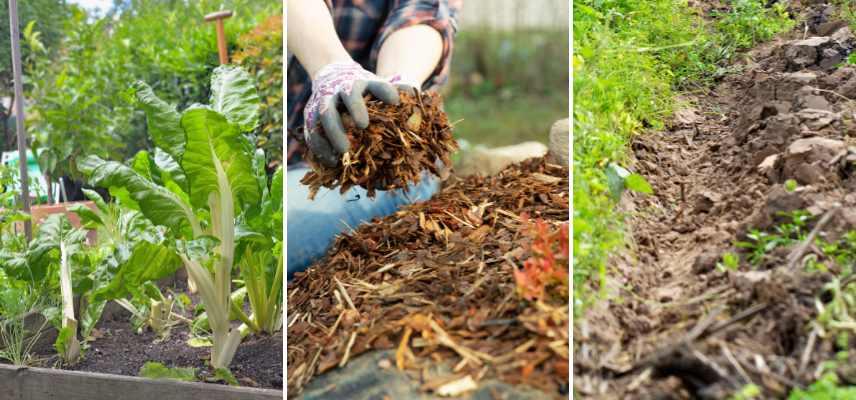
Raise bed, grow vegetables suited to conditions, mulch and dig furrows: some tips to remedy wet soil
- Subscribe!
- Contents
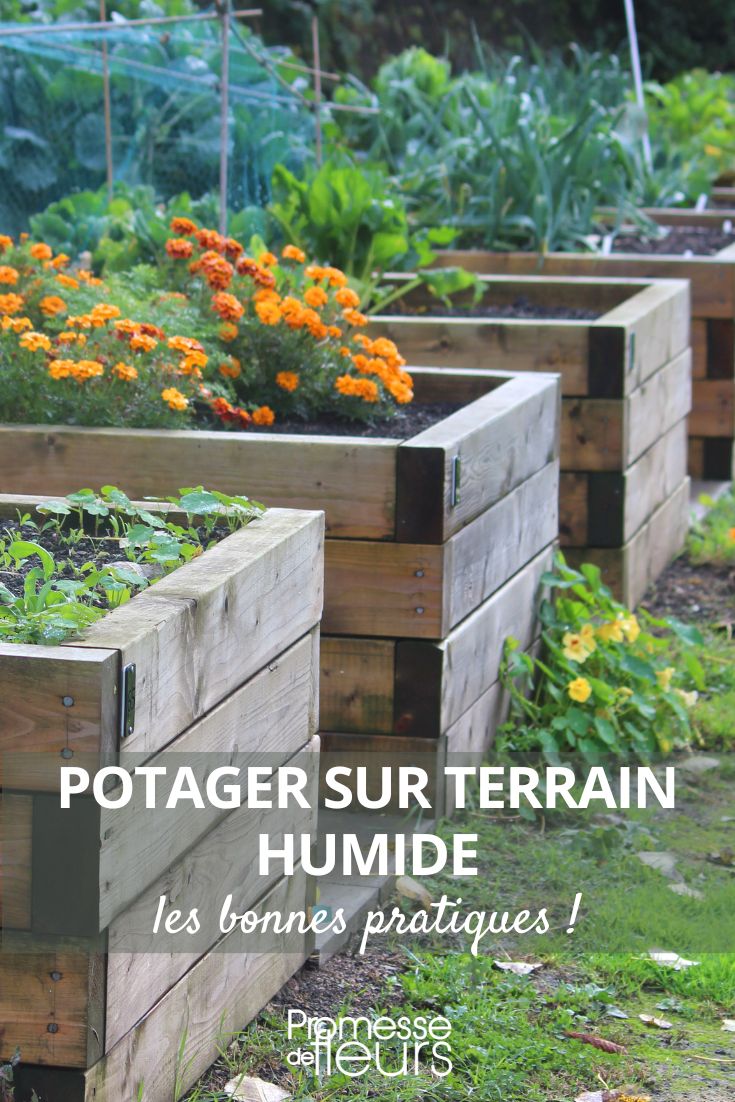































Comments